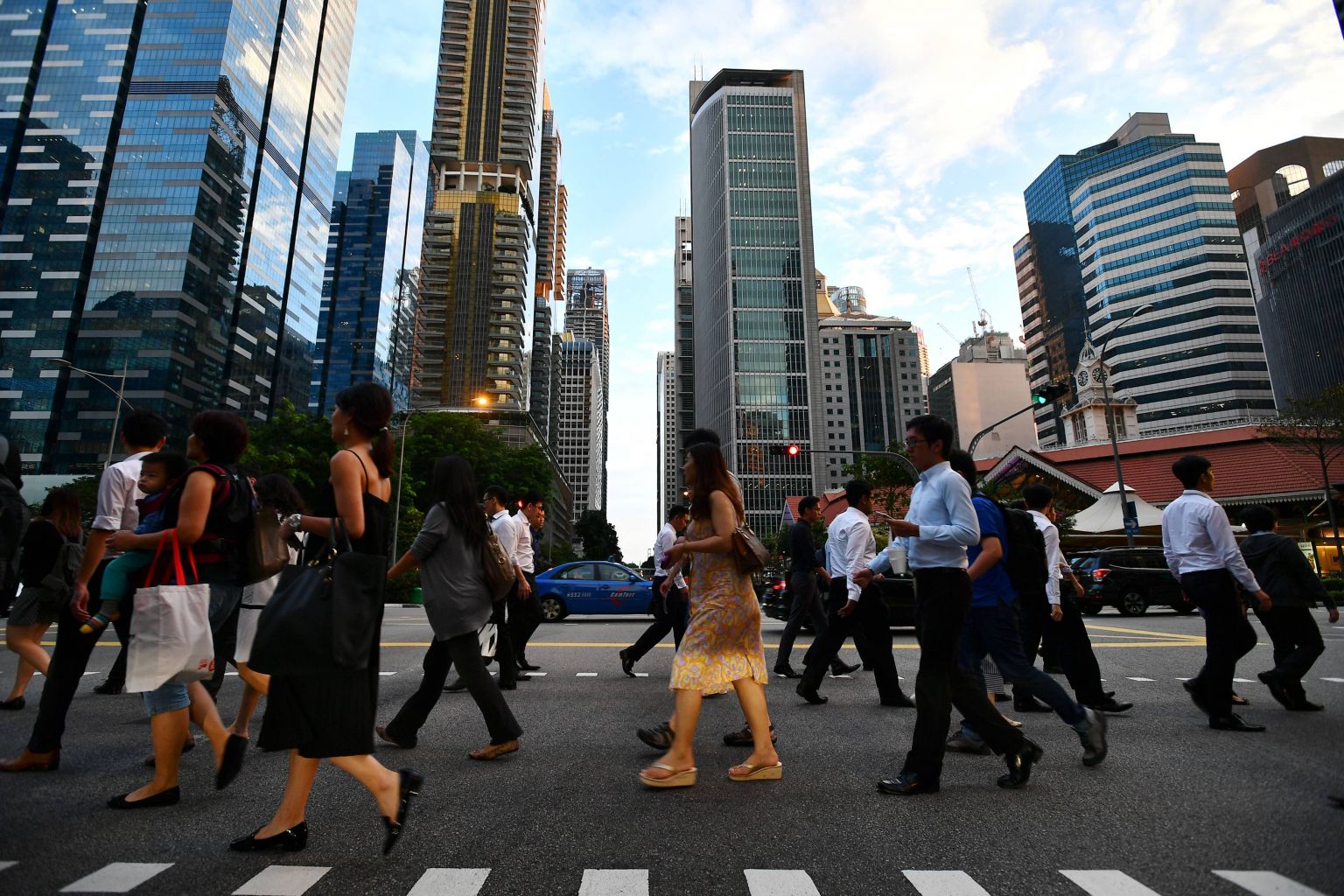Unemployment rises to highest level in a decade in Q3 2019, but employment growth also up
Sign up now: Get ST's newsletters delivered to your inbox

The overall seasonally adjusted unemployment rate crept up to 2.3 per cent in September, up from 2.2 per cent in June.
PHOTO: ST FILE
Follow topic:
SINGAPORE - Overall unemployment in Singapore crept up in the third quarter of this year to the highest level since 2009, as more workers were retrenched.
At the same time, employment growth shot up to the highest level since 2014.
This was the mixed picture painted by the latest preliminary figures on jobs released by the Ministry of Manpower (MOM) on Thursday (Oct 24).
The overall seasonally adjusted unemployment rate crept up to 2.3 per cent in September, up from 2.2 per cent in June. The last time the rate was 2.3 per cent was in December 2009, which had come off a peak of 3.3 per cent in September 2009.
The rate for Singaporeans rose to 3.3 per cent, from 3.2 per cent, while the rate for citizens and permanent residents combined rose to 3.2 per cent, from 3.1 per cent. The September rates for citizen and resident unemployment were last reached in June 2017 and March 2017 respectively.
Citizen unemployment in June had previously been stated as 3.3 per cent, but was revised down.
Retrenchments rose to 2,900 last quarter, up from 2,320 in the preceding quarter and 2,860 a year ago. Services continued to form the bulk of retrenchments.
However, total employment, excluding foreign domestic workers, rose by 22,400 from July to September. This is more than three times the growth of 6,200 in the previous quarter, and higher than the growth of 16,700 a year earlier.
This was largely due to 16,100 more people finding work in the service sector, said the ministry. The growth was mainly in community, social and personal services, professional services and information and communications, while the decline in employment in sectors such as wholesale and retail trade was less than in the previous quarter.
The manufacturing sector employed 1,200 more workers, after three consecutive quarters of decline. It is only the fourth time the sector has seen positive employment growth since the start of 2014.
This comes amid higher production in the chemicals, biomedical manufacturing and general manufacturing clusters.
With increasing private and public sector construction activities, 5,300 more people were also employed in construction last quarter. The sector's third consecutive quarter of expansion comes after 11 quarters of falling employment.
Economists said the worsening unemployment rates and retrenchment are in line with the economic slowdown, though the labour market remains relatively resilient despite the slowdown in Singapore's economy.
Citi analysts Kit Wei Zheng and Ang Kai Wei said while job creation tends to be seasonally stronger in the third quarter, the employment growth figure appears stronger than what seasonal trends might suggest.
DBS senior economist Irvin Seah said that the mixed data likely shows the different phases of growth in different industries.
For instance, the tech sector could be doing very well, oil and gas still struggling, construction seeing a broad-based recovery, and manufacturing bottoming out, he said.
He also noted that the pickup in unemployment rates suggests that Singaporeans are still facing challenges in the labour market. Foreigners on work passes typically drop out of the unemployment count as they return home if they lose their jobs.

The breakdown in local and foreign employment growth for the third quarter is expected to be provided in the fuller labour market data released in December.
Manpower Minister Josephine Teo said in a Facebook post on Thursday that the rising unemployment and retrenchments, even as vacancies remain and employment growth improves, suggests that mismatches in the labour market are widening.
"It could be job seekers not having the skills to access available jobs, or jobs being insufficiently attractive," she said.
Closing the gaps requires both job seekers and employers to be more open and flexible, she added.
"Job seekers naturally prefer to return to their past occupations or industries. The better opportunities may however lie elsewhere... Employers too may prefer those with the same functional or industry experience, or both," she said.
She noted that employers are increasingly willing to train and take in mid-career candidates. This has helped to raise employment rates of older Singaporeans, which are catching up with countries in the Organisation for Economic Cooperation and Development.
The employment rate for citizens aged 55 to 64 was 66.8 per cent last year.
From January to August this year, about 22,000 job seekers found jobs through the Adapt and Grow initiative to help Singaporeans gain the skills for better jobs as the economy restructures, said the MOM. Close to 12,000 of them were aged 40 and above.
National Trades Union Congress assistant secretary-general Patrick Tay said in a Facebook post on Thursday that the rise in unemployment and retrenchments coupled with a rise in employment suggest that structural challenges like skills and jobs mismatches continue to be the main cause of unemployment here.
"We need to continue our efforts in training and supporting mature workers and (professionals, managers and executives), as they are most vulnerable," he said.
Looking forward, Mr Tay said that he does not expect a major spike in unemployment and retrenchments for the rest of the year, but there could be pockets of layoffs and slightly higher unemployment figures due to restructuring, transformation and digitalisation, coupled with uncertainties in global trade and geopolitics.
Barclays Bank economist Brian Tan said that the deterioration in labour market conditions will likely weigh on wage growth.
While DBS' Mr Seah expects a slight improvement, OCBC Bank chief economist Selena Ling said she expects the labour market to soften further going into next year. "I potentially expect more government targeted assistance for workers at the 2020 Budget," she said.

